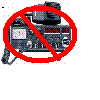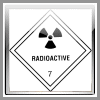| Author |
Message |
    
Atpbean32
New member
Username: Atpbean32
Post Number: 1
Registered: 5-2008
| | Posted on Monday, May 26, 2008 - 1:56 pm: | 


|
Hello All:
I have a noise problem that I require help with. I’ve researched the problem but became more confused on what to do. I hope someone can help. Below I have listed the symptoms and my equipment.
Symptoms:
1) No noise with ignition off.
2) Noise with ignition on-engine not running.
3) Noise with engine running.
4) Noise does not change with engine speed. It is a constant sound
5) No noise with coax disconnected from radio during #2 or 3.
6) Also I get sporadic noise with the engine running and standing still or driving down the road it reads up
to ½ on the signal strength meter.
Equipment:
Truck: 2006 Freightliner Century Class S/T has fiberglass body.
Radio: Connex 3300 hp.
Microphone: Road King 56B.
Coax: Belden RG-8X 14’-11/2”.
Mount: Firestik stainless steel mirror mount and stud.
Antenna: Wilson 2000 with 10” extension. Mounted on drivers side.
Power is connected to the battery terminal at the fuse box.
Ground is connected at the windshield post.
Ferrite core (snap on one’s) are used on coax & power cords.
Magnum power filter is also used..
I have all good grounds and continuity in the antenna system.
SWR is as follows:
CH1 1:5
CH19 1:3
CH40 1:2
Any advice would be greatly appreciated. |
    
Patzerozero
Senior Member
Username: Patzerozero
Post Number: 4256
Registered: 7-2004

| | Posted on Monday, May 26, 2008 - 5:41 pm: | 


|
for starters, based on #2, there is something electronic thet gets turned on with the ignition in the 'on' position. you gotta figure out what that is! |
    
2ir473
Intermediate Member
Username: 2ir473
Post Number: 145
Registered: 7-2002
| | Posted on Monday, May 26, 2008 - 5:47 pm: | 


|
2) Noise with ignition on-engine not running.
Sounds like a fuel pump could be the culprit. When you turn the key, the pump primes to provide fuel pressure.
4) Noise does not change with engine speed. It is a constant sound
Again, possible fuel pump, since it would be constant. Typical alternator whine would fluctuate with engine speed.
5) No noise with coax disconnected from radio during #2 or 3.
Another indication of possible fuel pump noise, since the interference is at the antenna, not in the electrical system of the vehicle.
Possible solutions include bonding (grounding) the vehicle body to the frame, using 1/2" or 1" braided, tinned ground strapping, available from amateur radio supply stores or auto parts stores. The braid from auto parts stores is usually short lengths, and you might need to get the stuff from ham radio stores that is available by the foot. Use the braided strapping to connect the body of the vehicle to the frame. If this is a car, do the trunk lid, doors and hood too. If it is a pickup truck, tie the passenger cab and bed to the frame. I personally also run braided straps from a few exhaust clamps to the frame, since the exhaust system can act as an antenna for automotive electronics interference.
Use a crimp on ring terminal, and solder the tinned braid to the terminal, this will keep the bond from getting corroded by road salts and grime. Then find a convenient bolt to place the ring terminal on. Vehicle frames have bolts or holes in which you can place a bolt, to bolt your ground strap to.
Also, depending on where the fuel pump is,(usually inside the tank these days),you can buy ferrite cores, which are pieces of iron (like a magnet), to wrap around the power leads that go to the fuel pump. The simplest way to do this is to find the wires that go to the fuel pump and place some clip on ferrite cores over them. There are other solutions that require you cut the leads, wrap them around a ferrite core several turns, then reconnect the wire leads, but that is beyond many people.
These snap-on cores are available at various electronics supply stores, like Radio Shack (search for snap together ferrite choke core).
I did this type of work on my '92 Ford Ranger and it made a huge difference. Before the bonding (grounding) and ferrite chokes, the radio was unusable. After the work, just a hint of noise.
Paul
2IR473
CEF-218/ham #107
CDX8412
|
    
Patzerozero
Senior Member
Username: Patzerozero
Post Number: 4257
Registered: 7-2004

| | Posted on Monday, May 26, 2008 - 7:31 pm: | 


|
I did this type of work on my '92 Ford Ranger and it made a huge difference-i sold my '92 explorer for just that reason 
fuel pump was was i was hinting towards! |
    
Foxhunter
New member
Username: Foxhunter
Post Number: 7
Registered: 4-2008

| | Posted on Monday, May 26, 2008 - 10:31 pm: | 


|
Hey I'd like to add maybe a small suggestion or two to the one's previously posted. I drive a 2006 Freightliner Columbia and I also was plagued by noise problems (as well as SWR issues). May I ask, does your rig have additional signal-emitting on-board electronics common with many trucks such as GPS/Tracking equipment or Quaalcom etc.? Possibly you could have an issue with a "working" alternator that still may have a faulty diodes/stator generating (even intermittent) noise. I'd check the main engine ground to the frame as well to the alternator case (it's possible a mechanic or vibration may've caused them to be loose or even disconnected. Bonding is a key-word with these trucks. The cab itself is aluminum on mine, as are most now, with the rest being a combination of fiberglass and composite materials--such as doors, hood, sideskirts and top/side air dams etc (ground plane problem causing). If your truck is "air-ride" then it most certainly is not in contact with, and is isolated from the trucks' frame---so what little grounding there is, is done with smaller factory installed gound wires. I bonded virtually everything with minimal-length 1-inch wide braided ground straps to provide for RF grounding which is entirely different than DC ground. I also installed a Newmar 150A alternator conditioning noise filter on the positive supply line coming from the alternator, within 1-ft of the alternator and also one additional unit on the negative cables within 1-ft of the radio & amp. As a side-note I increased my transmitting range on AM from 13 miles average to nearly 20 miles by relocating the antenna mounting location from the trucks mirror bracket, to a bracket located up behind the sleeper which increased the reflective metal-mass below the antenna and lowering SWR. I also RF-grounded the antenna mounting location for good measure. I'll be curious if you make any progress with your noise problems and what you might find. As usual I hope anything I posted helped. |
    
The_horseman
Junior Member
Username: The_horseman
Post Number: 22
Registered: 11-2007
| | Posted on Monday, May 26, 2008 - 11:13 pm: | 


|
There is a fix for the problem in the Century and Columbia Class trucks! Has something to do with the ECM!
Cannot remember where I read it!
I do remember a buddy of mine had a hiss in his radio in a Columbia - ran 10 gauge wire (both positive and negative) straight from the radio to the battery and it fixed his problem!
If I find that service bulletin, I will send it out to ya!
Good Luck!
CEF # 949
CEF Ham # 272
|
    
The_horseman
Junior Member
Username: The_horseman
Post Number: 23
Registered: 11-2007
| | Posted on Monday, May 26, 2008 - 11:15 pm: | 


|
Oh, forgot, I drive an FLD, and occasionally get a noise in my Midland!
:-), it only occurs when I plug my cell phone charger in to the cigarette lighter outlet in the cab, does not happen when it is plugged in the sleeper!
CEF # 949
CEF Ham # 272
|
    
Foxhunter
New member
Username: Foxhunter
Post Number: 8
Registered: 4-2008

| | Posted on Tuesday, May 27, 2008 - 2:02 am: | 


|
One or two additional comments if I may. Many/most fuel pumps on large diesel engines are mechanical, however their fuel injectors are electromechanical and rely on the vehicle electrical system & computer to time them. The fuel circulating pumps are also most often mechanical.
You cannot, in most cases, avoid electrical noise while using the fuse panel for accessory hook-up in a large truck. I've found, in every large-sized truck, that it was the WORST place to tie-in. If you will take another suggestion, run your own supply lines both +/- directly from the batteries---paricularly the last one in-series in the battery compartment, (which is the most isolated)---unless that particular battery is tapped into by the electrical system harness then choose another. That goes for both positive and negative leads. Use heavy AWG leads such as 2-4AWG fine-stranded cable (car audio hook-up wire works good and relatively inexpensive) to cover the distance and avoid voltage-drop. Terminate both lines close to your radio into separate "distribution blocks" (found at Wal-Mart, Auto Zone, Pep Boys etc). They usually accept a 2-4AWG input cable and have multiple 8-10AWG outputs that you can then run a wire the short distance to your Connex. It would also give you additional outlets +/- to hook up additional accessories if you have/will have them. The fuse/breaker panels are NOTORIOUS for "dirty" power and that I believe could really help solve your problem.
As usual I hope anything I posted helped. |
    
Tech237
Moderator
Username: Tech237
Post Number: 1006
Registered: 4-2004
| | Posted on Tuesday, May 27, 2008 - 8:36 am: | 


|
Fuel supply components, either pump or injectors. Try placing a dc filter on the power lead to the radio, capacitor-1M Ohm resistore form the power leads of the pump and injectors to ground. Also run the power directly (both leads) from the battery.
All of the above should help reduce or removed the noise.
Simon
Tech237
N7AUS
|
|



